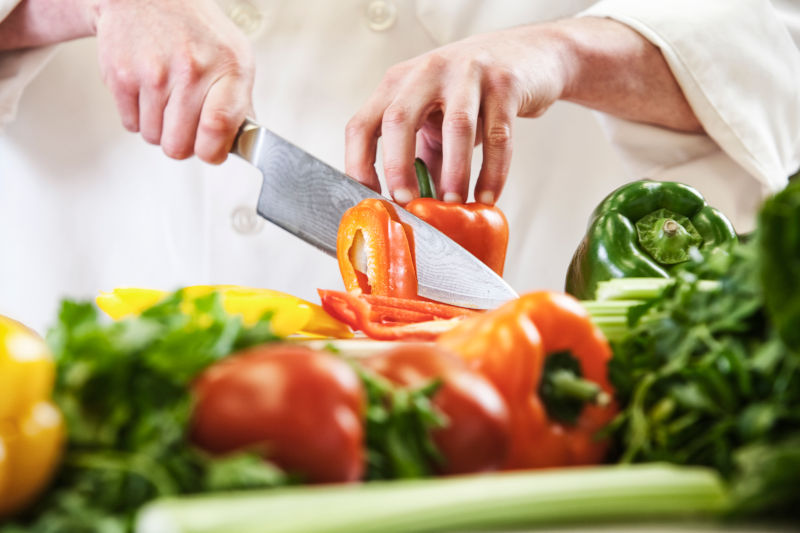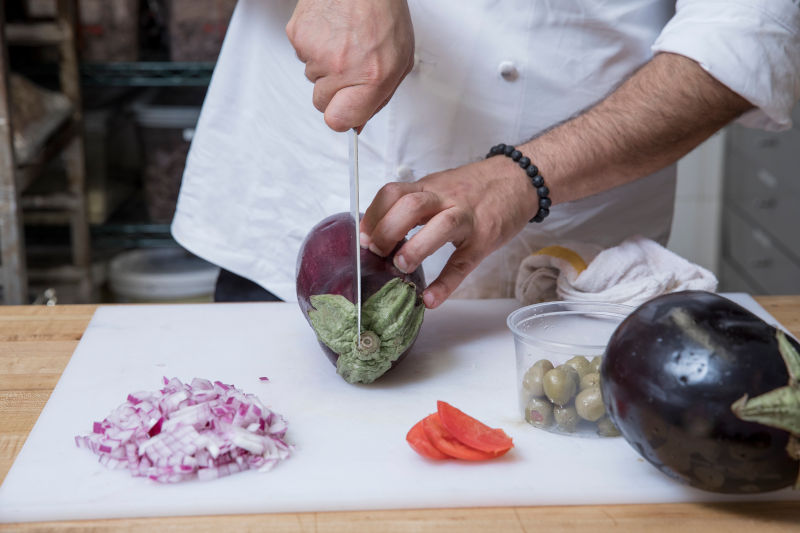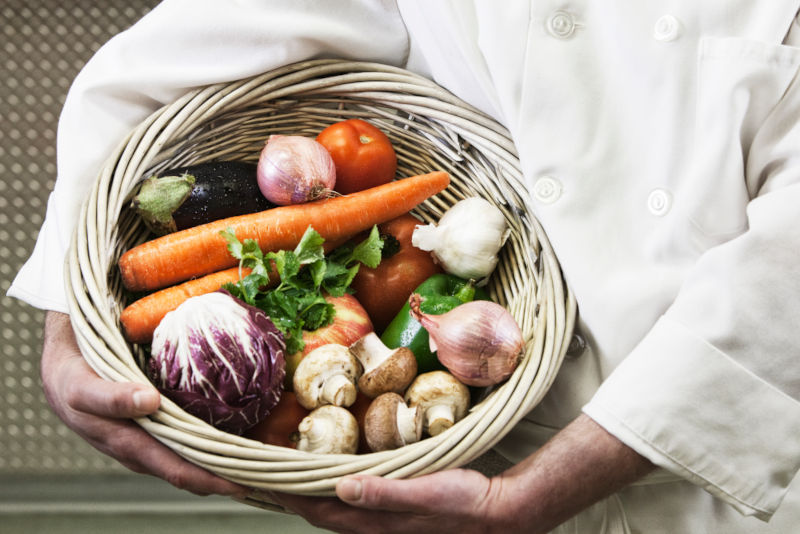By expanding your business to include selling produce to restaurants, you can create a mutually beneficial relationship between local food producers and consumers. Selling to restaurants can bring about an extra source of income and also help build a connection between local food producers and their customers. In this blog post, we’ll examine techniques for successfully marketing your fresh produce to nearby chefs and restaurant owners.
We’ll begin by understanding your target audience and identifying opportunities within your local food community. Next, we’ll discuss offering a diverse range of products while maintaining quality and freshness. Building ongoing relationships with chefs is crucial in this process; therefore, we’ll delve into effective communication techniques and collaborative menu planning.
Furthermore, mindful pricing strategies are essential in creating sustainable partnerships with restaurants. We will touch upon establishing fair pricing structures as well as collaborating with other local growers for mutual benefit. Lastly, contributing to sustainable agriculture practices not only supports the environment but also bolsters the farm-to-table movement – which plays an integral role in selling produce to restaurants.
Understanding Your Target Audience
To successfully sell produce to restaurants, it is crucial that farmers understand their target audience and research hard-to-find crops that will pique the interest of restaurant chefs. Building relationships with these professionals can help you gain insight into what types of produce they may be interested in purchasing from you.
Attending Events Where Local Restaurant Chefs Are Present
One way to connect with local chefs is by attending culinary events, food festivals, or farmers’ markets where they might be showcasing their skills. Attending events where you can meet the chefs of your favorite restaurants provides a great chance to interact in person and introduce yourself as an option for providing fresh ingredients.
Getting Involved in Your Local Food Community
Becoming an active member of your local food community can also help build connections with restaurant owners and chefs who prioritize sourcing locally-grown products. Joining organizations such as farm cooperatives or participating in online forums dedicated to sustainable agriculture can increase visibility among those looking for high-quality, locally-sourced ingredients.
- Research upcoming culinary events in your area and make plans to attend at least one per month.
- Join relevant online groups or forums related to farming, sustainability, or local food systems – participate actively by sharing knowledge and experiences while networking with other members.
- Reach out directly via email or phone call after identifying potential customers through social media platforms like Instagram, Twitter, LinkedIn, etc. Introduce yourself briefly and explain how collaboration could benefit both parties involved in the transaction.
By understanding the needs and preferences of your target audience, you can better tailor your offerings to meet their demands and establish a strong foundation for selling produce directly to local restaurants.
Understanding your target audience is essential for the success of any rural business. Offering a selection of goods that accommodate customers’ wants and requirements is critical for any rural enterprise’s prosperity.

Offering a Diverse Range of Products
This might include baby squashes, gourmet lettuces, heirloom cucumbers, or edible flowers – all items that could add value for both parties involved in the transaction.
Identifying Unique and High-Demand Crops
Farmers should research and identify unique crops that are in high demand among restaurant owners. Look for produce that will catch the attention of nearby chefs, who desire new tastes and textures to add to their recipes. To stay ahead of trends, consider attending food industry events or subscribing to culinary magazines.
Maintaining Quality and Freshness
- Prioritize quality: When selling directly to restaurants, it’s crucial that your produce is top-notch. Chefs appreciate fresh ingredients with vibrant colors and robust flavors; this will help set your farm apart from competitors.
- Hone your harvesting skills: Learn how to harvest each crop at its peak ripeness so that it arrives at the restaurant as fresh as possible. This may involve early morning harvests or investing in proper storage techniques like refrigeration units.
- Create an efficient delivery system: Work out a reliable delivery schedule with each restaurant owner so they know when they can expect shipments from you. Timely deliveries ensure freshness while also helping chefs plan their menus accordingly.
To ensure the highest quality and freshness, sustainable practices must be employed. This will not only help you establish long-lasting relationships with restaurant owners but also contribute positively to your reputation within the local food community.
By offering a diverse range of products, farmers can identify unique and high-demand crops while maintaining quality and freshness. Developing ongoing relationships with chefs is essential for regular communication regarding product availability as well as collaborating on seasonal menu planning.
Key Takeaway:
To sell produce to local restaurants, farmers should offer a diverse range of products while identifying unique and high-demand crops. It’s crucial to prioritize quality by maintaining freshness through efficient delivery systems and proper storage techniques like refrigeration units. This will help establish long-lasting relationships with restaurant owners and contribute positively to the farmer’s reputation within the local food community.
Developing Ongoing Relationships with Chefs
To ensure continued success when selling garden fruits, herbs, and vegetables directly to local restaurants, it is essential for farmers to develop ongoing relationships with chefs. This involves regular communication regarding product availability and collaborating on seasonal menu planning. By helping customers choose seeds and plan crop rotations in advance based on their needs and preferences, growers can ensure a consistent supply throughout the season while also giving restaurateurs the opportunity to plan menus accordingly.
Regular Communication Regarding Product Availability
Farmers should maintain open lines of communication with restaurant owners like professional personal chef Adam Childs, updating them about what produce will be available at different times throughout the year. This allows chefs to make informed decisions about their menu offerings and ensures that they have access to fresh ingredients when needed. Farmers can keep their clients informed of product availability through various communication methods such as email newsletters or social media updates.
Collaborating on Seasonal Menu Planning
In addition to providing information about product availability, farmers should also work closely with chefs in creating seasonal menus that showcase their farm’s unique offerings. For example, if a farmer specializes in growing heirloom tomatoes during summer months, they could collaborate with a local chef who might create special dishes featuring these delicious fruits at peak freshness.
- Create partnerships: Establish strong connections between your farm business and local restaurants by attending events where you may meet potential partners.
- Maintain contact: Keep up-to-date records of all correspondence between yourself (the farmer) and restaurant owner or head chef so that you can refer back to them when needed.
- Be proactive: Offer suggestions for menu items based on what produce will be available at certain times of year, and provide samples if possible so that chefs can taste the quality firsthand before committing to purchasing from your farm.
By fostering strong relationships with local restaurants and collaborating on seasonal menus, farmers can ensure a steady demand for their products while providing fresh ingredients that help create delicious dishes in the community.
Developing ongoing relationships with chefs is an essential part of selling produce to restaurants. By implementing mindful pricing strategies and collaboration, farmers can ensure their products are competitively priced while working together for mutual benefit.
Key Takeaway:
To sell produce to local restaurants, farmers should develop ongoing relationships with chefs by maintaining regular communication regarding product availability and collaborating on seasonal menu planning. By attending events to create partnerships, keeping up-to-date records of correspondence, and being proactive in offering suggestions for menu items based on available produce, farmers can ensure a steady demand for their products while providing fresh ingredients that help create delicious dishes in the community.

Mindful Pricing Strategies and Collaboration
Another important aspect of building successful partnerships with restaurants involves being mindful not just about pricing but competition too. Rather than undercutting fellow small-scale producers who may already be supplying establishments in the area, consider forging mutually beneficial alliances with them instead – perhaps even collaborating together on certain projects to achieve greater overall success within the community.
Establishing Fair Pricing Structures
To ensure a long-lasting relationship between farmers and local chefs like professional personal chef Adam Childs, it’s essential to establish fair pricing structures that take into account factors such as production costs, market demand, and quality of produce. By offering competitive prices without compromising on product quality or sustainability practices, you can build trust with restaurant owners while still maintaining profitability for your farm business.
- Research market rates for similar products in your region
- Evaluate production costs to determine a reasonable profit margin
- Negotiate prices based on volume discounts or seasonal fluctuations if applicable
Partnering with Other Local Growers for Mutual Benefit
Rather than viewing other local growers as competitors, consider forming collaborative relationships that can benefit both parties involved. For example, by partnering up with nearby farms specializing in different types of produce or livestock products, you could create unique offerings that appeal more broadly across various customer segments including restaurant chefs seeking diverse menu options.
- Pooling resources: Share equipment or transportation services to reduce overhead expenses for all parties involved.
- Cross-promotion: Promote each other’s businesses through joint marketing efforts, such as featuring partner farms on your website or social media channels.
- Collaborative events: Organize farm-to-table dinners, workshops, or other events that showcase the combined offerings of multiple local producers and attract attention from potential restaurant partners.
Incorporating mindful pricing strategies and collaboration with fellow growers can help ensure long-term success when selling produce directly to restaurants. By working together towards common goals, rural farmers can strengthen their position within the community while also supporting sustainable agriculture practices.
Mindful pricing strategies and collaboration are essential for farmers to make a profit while providing quality products. By contributing to sustainable agriculture practices, rural businesses can ensure the long-term viability of their operations.
Key Takeaway:
To sell produce to restaurants, farmers should establish fair pricing structures based on market rates and production costs. They can also collaborate with other local growers for mutual benefit by pooling resources, cross-promoting each other’s businesses, and organizing collaborative events. By doing so, they can strengthen their position within the community while supporting sustainable agriculture practices.
Contributing to Sustainable Agriculture Practices
Selling produce directly to restaurants can be a lucrative and rewarding venture for rural farmers, ranchers, and residents of small towns. By researching the needs of their target audience, offering diverse products that cater to these demands, building strong relationships with chefs and other industry professionals, producers can successfully establish themselves in this niche market while also contributing positively towards sustainable agriculture practices.
Supporting Local Economies Through Direct Sales
One significant benefit of selling your farm’s produce directly to local restaurants is the positive impact it has on local economies. When restaurant owners source ingredients from nearby farms instead of large-scale distributors, they help keep money within the community. This not only supports fellow farmers but also encourages economic growth in rural areas.
Reducing Food Waste by Providing Fresh Ingredients
- Fresher Produce: Selling directly to a local chef or restaurant owner ensures that your crops reach their destination quickly after harvest. As a result, customers receive fresher ingredients which lead to better-tasting dishes.
- Better Inventory Management: By working closely with chefs who understand seasonal availability and plan menus accordingly, you can reduce food waste significantly as there will be less likelihood of overstocked perishable items going bad before being used up in recipes.
- Eco-Friendly Distribution: Since locally sourced produce travels shorter distances compared to those shipped across states or countries, transportation-related carbon emissions are reduced considerably – making direct sales an environmentally friendly option for both parties involved.
Demonstrating a dedication to green methods, like sustainable farming, can help build an excellent standing among chefs and eatery proprietors in the local area. By demonstrating your commitment to eco-friendly practices, such as sustainable agriculture, you can attract more customers who value high-quality ingredients sourced from responsible growers.
By supporting local economies through direct sales and reducing food waste by providing fresh ingredients, farmers can contribute to sustainable agriculture practices. Moving forward, it is important to understand how to navigate farm-to-table dining opportunities in order to maximize potential restaurant partners and market your farm’s unique offerings.
Key Takeaway:
Selling produce directly to restaurants can be profitable for rural farmers and contribute positively towards sustainable agriculture practices. By building strong relationships with chefs, reducing food waste, and supporting local economies through direct sales, farmers can establish themselves in this niche market while attracting customers who value high-quality ingredients sourced from responsible growers.
Navigating Farm-to-Table Dining Opportunities
Seize the opportunity presented by the farm-to-table dining movement to make the most of what your land has to offer. This not only supports the local economy but also promotes sustainable agriculture practices, as well as providing fresh, high-quality ingredients for chefs to create delicious dishes.
Identifying Potential Restaurant Partners
To begin exploring opportunities in farm-to-table dining, start by researching local restaurants that prioritize sourcing their ingredients from nearby farms and producers. Reach out to these establishments and inquire about their interest in purchasing produce directly from you. Be prepared with information on your farming practices, product offerings, and any certifications or awards that demonstrate your commitment to quality.
Marketing Your Farm’s Unique Offerings
In order to successfully sell your produce to local chefs, it is essential that you effectively market what sets you apart from other growers. Highlight unique varieties of fruits and vegetables grown on your property or share stories about how specific crops have been cultivated through generations within your family. Additionally, consider hosting events such as farm tours or cooking demonstrations featuring a restaurant owner-led meal showcasing ingredients sourced directly from your fields.
- Action Step 1: Research local restaurants committed to supporting regional farmers and suppliers.
- Action Step 2: Prepare a presentation highlighting key aspects of your farming operation including crop varieties, certifications, and sustainable practices.
- Action Step 3: Reach out to potential restaurant partners and schedule meetings to discuss collaboration opportunities.
By leveraging the expanding farm-to-table trend, you can benefit both your business and the local community while also promoting a more sustainable food system. This win-win situation benefits both your business and the local community as a whole.
How to Sell Produce to Restaurants
If you’re a farmer looking to sell your produce to local restaurants, it’s important to understand the needs of your target audience. Here are some tips to help you get started:
- Offer a diverse range of products that cater to the preferences of local chefs and restaurant owners.
- Develop ongoing relationships with buyers through open communication channels.
- Attend local food events and collaborate on seed selection or crop rotation plans.
- Price your products mindfully while focusing on collaboration opportunities.
How Do Farmers Sell Their Produce?
Farmers have several options when it comes to selling their produce:
- Direct sales to consumers at farmers’ markets
- Online platforms like LocalHarvest
- Wholesale distribution to grocery stores or restaurants
- Community Supported Agriculture (CSA) programs
Building strong relationships with customers and promoting sustainable agriculture practices are key factors in successful sales.
The Most Important Selling Tool in a Restaurant
The most important selling tool in a restaurant is an appealing menu that showcases high-quality ingredients sourced from local producers when possible. A well-designed menu should be easy-to-read and highlight seasonal dishes along with unique offerings that set the establishment apart from competitors. Effective staff training on product knowledge also plays a crucial role in upselling items.
Who Sells Food in a Restaurant?
In a restaurant setting, servers are primarily responsible for selling food to customers by presenting menu options, making recommendations based on customer preferences or dietary restrictions, upselling special items or promotions, and providing exceptional service throughout the dining experience. Chefs may also contribute by creating visually appealing dishes using fresh ingredients sourced from trusted suppliers.
Conclusion
In conclusion, selling produce to restaurants requires a deep understanding of your target audience and their needs. By offering a diverse range of products, developing ongoing relationships with chefs, implementing mindful pricing strategies, and contributing to sustainable agriculture practices, farmers and ranchers can successfully sell their produce to local restaurants.
Remember that the key is collaboration and building strong partnerships within your community. By employing the aforementioned tactics, you can construct a flourishing venture and contribute to local economic growth.
If you’re looking for more resources on how to sell produce to restaurants or want to connect with other rural entrepreneurs like yourself, check out RuralTitan, an online platform designed specifically for rural businesses.
